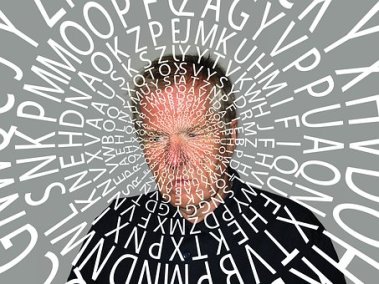Tags
5 Levels of Power, eunicethecoach, Forbes, Inc, Leader as facilitator, Leadership Myths, Levels of leadership, Marshall Goldsmith Stakeholder Centered Coaching, Marshall Goldsmith webinar, Redefining Leadership, Social influence, Types of power, World Economic Forum 2017 Class of Global Leaders
We had just pored through the results of the 360 leadership assessment. The client was surprised by the overwhelmingly positive responses about her leadership and potential for even greater things. What appears to underlie her rather amusing reaction is the often misunderstood and narrowly-defined concept of “leadership”.

Definition of Leadership
What does it mean to be a leader and to lead? The term “leadership” is not easy to define. According to Cambridge Dictionaries Online, it is “the quality or ability that makes a person a leader, or the position of being a leader”; it is also “the people who are in charge of a government or group”. The Merriam-Webster Online Dictionary defines “leadership” as “the office or position of a leader”; the “capacity to lead” or “the act or an instance of leading”. Somehow the definitions seem vague and inadequate.

Leadership Myths
Here are four myths about leadership:
Myth #1: Leadership is about job titles and corner offices
Having a CXO title and a huge corner office with a secretary does not automatically make a person a leader. Without a doubt, we can find leaders without titles (LWOT) commanding great respect and leading others with significant influence at the workplace everywhere and everyday. These LWOT and influencers are the ones with colleagues, teammates or stakeholders who follow them of their own volition. (Click here for a Forbes article offering tips on “How To Lead When You’re Not A Leader”.)
Myth #2: Leadership is about having certain personal attributes
Ask anyone to describe what a leader looks like and most would envisage someone who is imposing or charismatic and larger-than-life. While there are certainly dynamic and mesmerising extroverts who are also effective leaders, many have come to recognise the effectiveness and success of introverted leaders despite their more low-key approach – Abraham Lincoln, Eleanor Roosevelt, Rosa Parks, Mahatma Gandhi, Barack Obama, Bill Gates, Warren Buffett, Elon Musk, Mark Zuckerberg, Steven Spielberg, Dr Seuss…just to name a few. (To find out more about some amazingly successful introverts in history, click here for an article by Inc.)
Myth #3: Leadership has something to do with seniority or one’s top spot in the food chain
This may be true to a certain extent, especially in certain cultures, but the truth is that length of service and being at a certain pay grade maketh not a leader, let alone an inspiring and effective one. Trailblazing millennials in this brave new world include Malala Yousafzai and Mhairi Black. But there are many more. The World Economic Forum (WEF) 2017 Class of Global Leaders lists the latest 100 global leaders under the age of 40. (Click here to find out more about these inspiring young leaders.)
Myth #4: Leadership is management
Despite the established POLC (Planning-Organising-Leading-Controlling) framework for management, the manager essentially manages things and situations, while the leader leads people. Leadership and management are not synonymous. Words associated with the manager include: “planning”, “organising”, “control”, “measurements”, “monitoring”, “coordination”, “problem solving”, “supervising”, “hiring”, “firing” and “maintenance”. A manager performs these roles to keep things humming smoothly. On the other hand, the leader strategises, spearheads, steers, advocates, inspires, influences, mobilises, galvanises, models, mentors, coaches, motivates, nurtures, energises and empowers to translate vision into reality, to transform and to leave a meaningful and lasting legacy.
Yet we all know that in this brand new economy and digital age, the leader is no longer superior to the people being led – he is no longer the expert who knows all the answers, and neither is he viewed as such by those around him. Marshall Goldsmith describes the evolving global leader of the future as more of a facilitator. The global leader of the future identifies, leverages and then facilitates company talent, resources and learning for the coordinated problem solving of daunting and complex issues within the global organisation and without, to make a difference in the world.

Redefining Leadership
Reading a Forbes article by Kevin Kruse, “What Is Leadership?”, might lead us to the conclusion that leadership is not just about one of the following:
- Having followers (Peter Drucker)
- Having influence (John Maxwell)
- Empowering others (Bill Gates)
- Having the capacity to translate vision into reality (Warren Bennis)
Instead, leadership encompasses all of the above and is defined as “a process of social influence, which maximises the efforts of others, towards the achievement of a goal”. Hence an effective leader is essentially a change champion who influences, facilitates and galvanises all stakeholders into action by maximising their know-how, strengths and contributions, towards transformation and the achievement of a shared vision, purpose and goal (my own refined definition which is likely to evolve over time).

Types of Power
While we have attempted to define leadership, we also recognise that it is closely related to power and its accessibility. There are several types of power which influence a person’s leadership:
- Position power (Authority)
- Reinforcement power (Reward or Punishment)
- Referent power (Respect)
- Personal power (Likability/Popularity)
- Connection power (Access to Power/Powerful Relationships)
- Information power (Value & Scarcity)

Understanding the different types of power will enable the leader to assess his or her leadership style and motivations as well as address any deficits.
Levels of Leadership
Reflection on different types of power as well as the definition of leadership might then lead us to consider John Maxwell’s 5 Levels of Leadership – Position, Permission, Production, People Development and Pinnacle.

As a leader or when coaching a leader, it is perhaps best practice to consider one’s leadership in terms of these levels. For example, are people following us merely because of the position and title we hold? Do colleagues listen to us only because we contribute to the company’s bottomline or do they genuinely like and respect us because they recognise that we have impacted their lives in a meaningful way?
Such a posture of deliberation on the five different levels in relation to each of our stakeholders is potentially humbling. However, setting aside precious time to reflect on and understand what leadership means today and in the future might prove to be insightful, powerful and fruitful, perhaps even leading us to significant, life-changing breakthroughs.
Note: To find out more about the evolving role of the leader and the leader of the future, click here for a special webinar by world-renowned leadership thinker, author and coach Dr. Marshall Goldsmith, and Marshall Goldsmith Stakeholder Centered Coaching Master Coach Will Linssen, which was held on 24 & 31 January 2018 at 10am EST/3pm London/8.30pm Mumbai.
